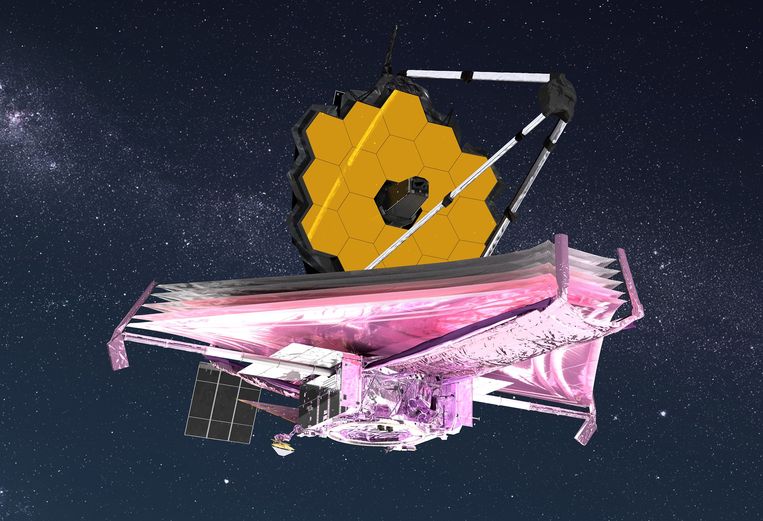To take new steps in astronomy, it is essential to be able to see more and better than before. Galileo Galilei did just that when in 1610 he pointed his telescope at the sky and saw four moons near Jupiter. Edwin Hubble did just that when he discovered with the Hook telescope on Mount Wilson in 1923 that the faintly visible Andromeda Nebula was actually an entire galaxy far beyond our Milky Way. So have astronomers around the world who, in recent years, have been able to look deeper into the universe than ever before with the Hubble Space Telescope.
Soon astronomy will reach a new milestone. History tends to slide, but the Ariane 5 rocket carrying the James Webb Space Telescope is scheduled to take off from the European Space Agency’s launch site in French Guiana on December 24, according to current schedules. This telescope, named after the man who led the US space agency NASA in the 1960s, can be considered a successor to Hubble. But since Hubble was able to observe mainly light from the visible and a small part of the infrared and ultraviolet part of the electromagnetic spectrum, James Webb focuses entirely on the infrared part of this spectrum.
heat radiation
Infrared radiation, also known as thermal radiation, has longer wavelengths than visible light. Hot objects, such as stars, emit a lot of energy-rich ultraviolet radiation and visible light. But relatively cool objects, such as planets, moons, and asteroids, show themselves in the infrared. Because of its longer wavelength, infrared rays, better than visible light, can escape by absorbing gas and pulling dust into space. Using James Webb, astronomers can see directly through these dust clouds and check star and planet formation processes.
Infrared light can also answer questions about the first stars and galaxies. Whoever looks further and further into the depths of the universe is also looking further and further back in time. You see the light that has been traveling for a long time. So we see the most distant galaxies as they appeared over 13 billion years ago, just a few million years after the universe was created.
Since the universe has expanded since then (also a discovery by the Hubble astronomer), the wavelengths of this ancient light have been “stretched” toward the longer infrared wavelengths, a phenomenon known as cosmic redshift. As a result, its light can only be seen as infrared radiation to us.
huge mirror
To capture the very faint light from those first galaxies, the James Webb Telescope has a mirror with a diameter of 6.5 meters. Compare that to its predecessor, Hubble: its mirror is only 2.4 meters in diameter. Webb can capture an unprecedented amount of photons (particles of light) and visualize cosmic objects in amazing detail.
“The James Webb Telescope was built, among other things, for what we call cosmic archaeology: looking very far back in time, at what the universe looked like when it was very young,” says Marin Franks, professor of extragalactic astronomy at Leiden University. “It will be exciting to see what Webb will add to our knowledge.”
Webb has four highly advanced measuring instruments on board: infrared cameras and spectrophotometers to split the collected light into different wavelengths.
The first images of James Webb are expected to come in mid-2022. After launch, the telescope will first travel 1.5 million kilometers to its location, where it is kept in a stable orbit by the gravitational fields of the Sun and Earth. During that journey, the mirror and huge umbrella (the size of a tennis court) unfold step by step, a risky process. With Webb in his folded position, his back to the sun and the earth, and all the instruments tested, observations can begin.

“Coffee buff. Twitter fanatic. Tv practitioner. Social media advocate. Pop culture ninja.”











More Stories
“Ask at least one question in return.”
According to research, people with this sleep rhythm live longer.
13 municipalities in the province of Seville have mosquitoes carrying the Nile virus